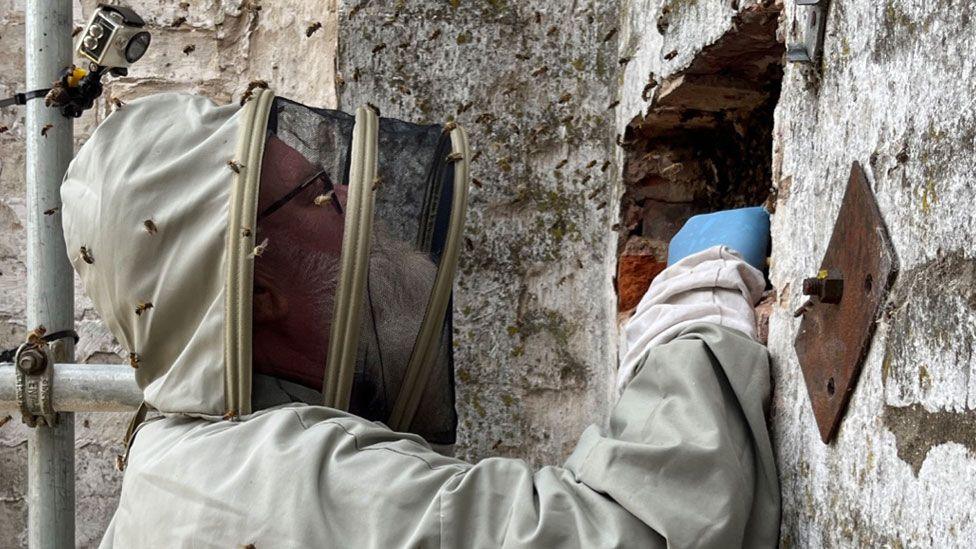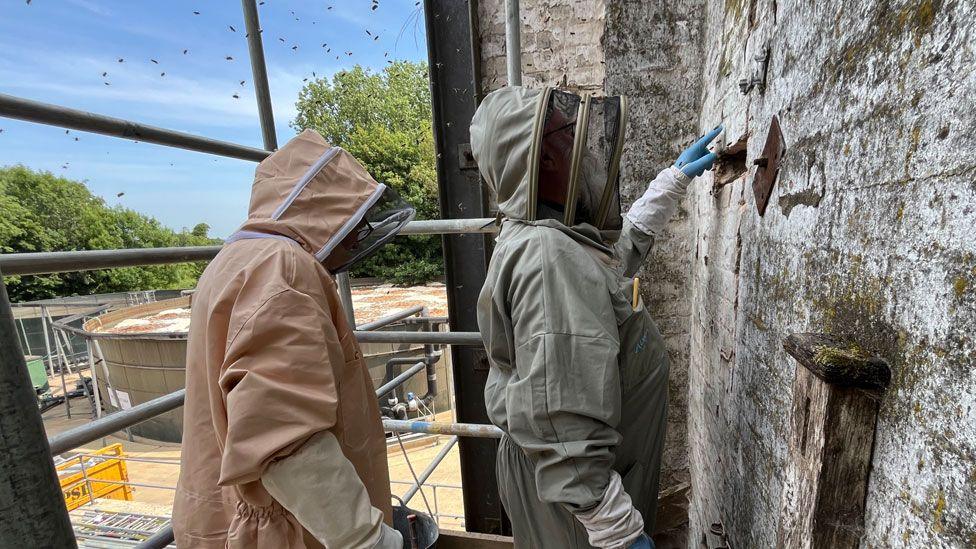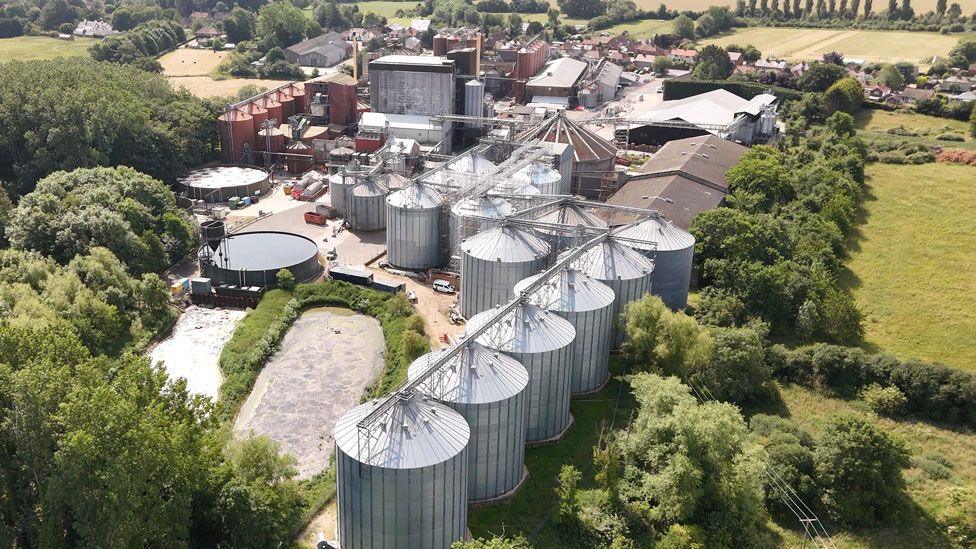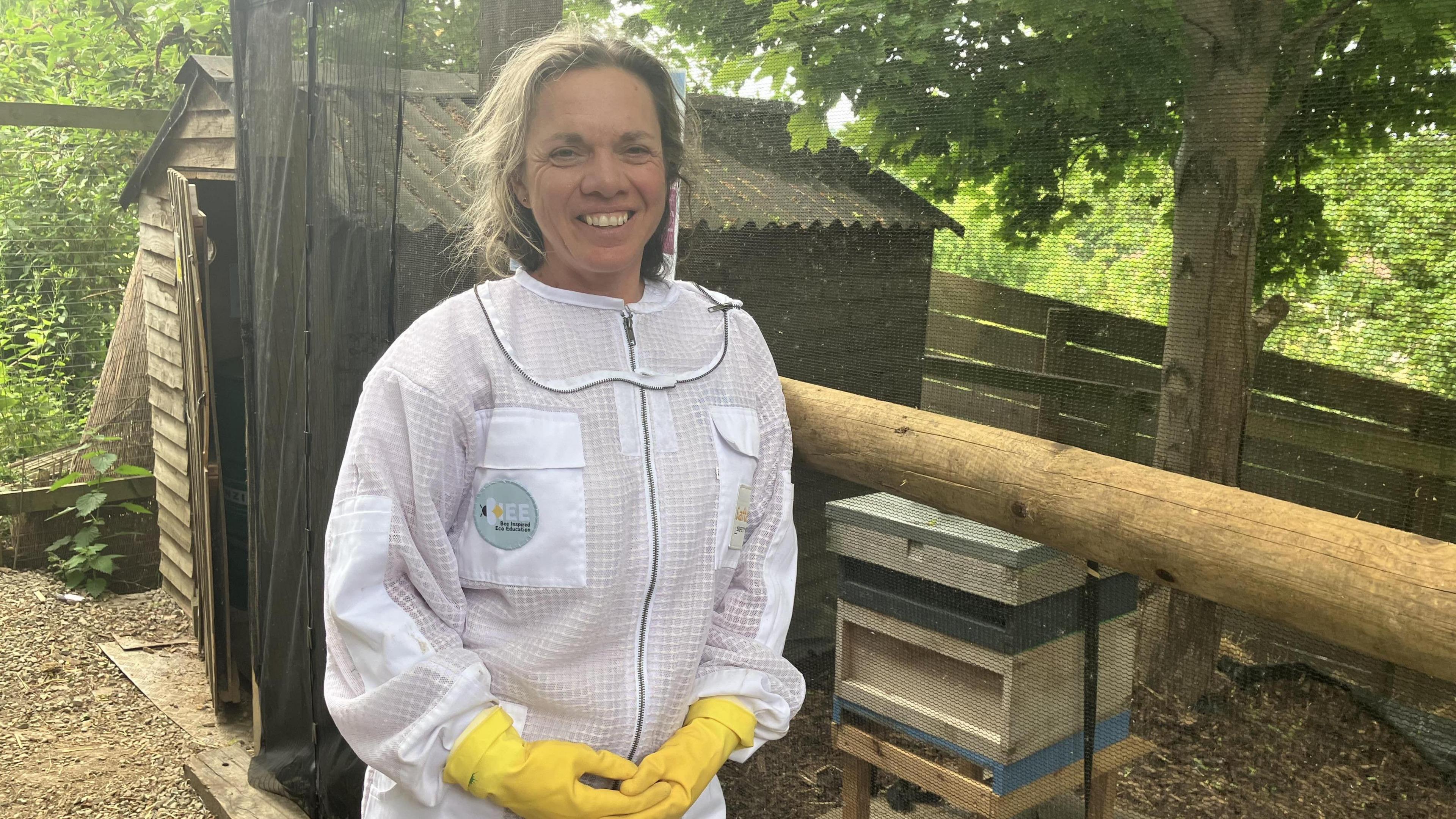Bee colony biggest I've dealt with, says keeper

Beekeeper Steve Barrett found a huge amount of honey as he extracted the colony
- Published
A honey bee colony discovered in a wall cavity of an industrial building "is the biggest I've ever dealt with", a beekeeper has said.
The nest, believed to contain 80,000 insects, was found about six weeks ago at Crisp Malt, Great Ryburgh, near Fakenham, Norfolk, by scaffolders.
Steve Barrett, of Barrett's Bees, said: "Yes, there's been a few stings, nothing major, but they've been very, very friendly, it's been a successful day."
He is also the beekeeper of brewing company Adnams of Southwold, Suffolk, and he initially plans to relocate the bees to his apiaries there.
"This is the biggest I've every dealt with, it's a really good size and very healthy too, said Mr Barrett.

The bees will be relocated to apiaries built by Mr Barrett, initially to Suffolk and later on to one of his apiaries in Oxfordshire
The extent of colony came to light when the company decided to renovate a building dating back to 1903, said Dan Clarke, site manager at Crisp Malt.
"As we put up some scaffolding, the scaffolders recognised there were some bees flying in and out of the building, so we stopped to have a little look, called in contractors and yes it's a bee hive," he said.
"There's always bees and other stuff flying around, no-one took much notice, but they've been around for 10 to 12 years and the hive was a lot bigger than expected."

Chris Fulford (left) helped Mr Barrett access the colony, which had taken up home in one of the maltings buildings
Chris Fulford, from builders PJ Spillings, was surprised that the bees were "a lot less angry than I thought they'd be".
The site supervisor admitted he was a bit nervous when he began cutting into the wall to access the colony.
"It's unnerving when they're all right in front of your face and you're in the hole, putting your hands in there, but it's been alright, I've got a nice suit and only got stung once so far," he said.

There has been a maltings at Great Ryburgh since the 1870s
Mr Barrett, who has 18 miles of apiaries across various counties, expects the bees to settle into their new home quickly.
"They'll do orientation flights, I'll face them southerly and there's quite a bit of forage where they're going," he said.
Get in touch
Do you have a story suggestion for Norfolk?
Follow Norfolk news on BBC Sounds, Facebook, external, Instagram, external and X, external.
Related topics
- Published20 May

- Published16 April

- Published26 September 2023
